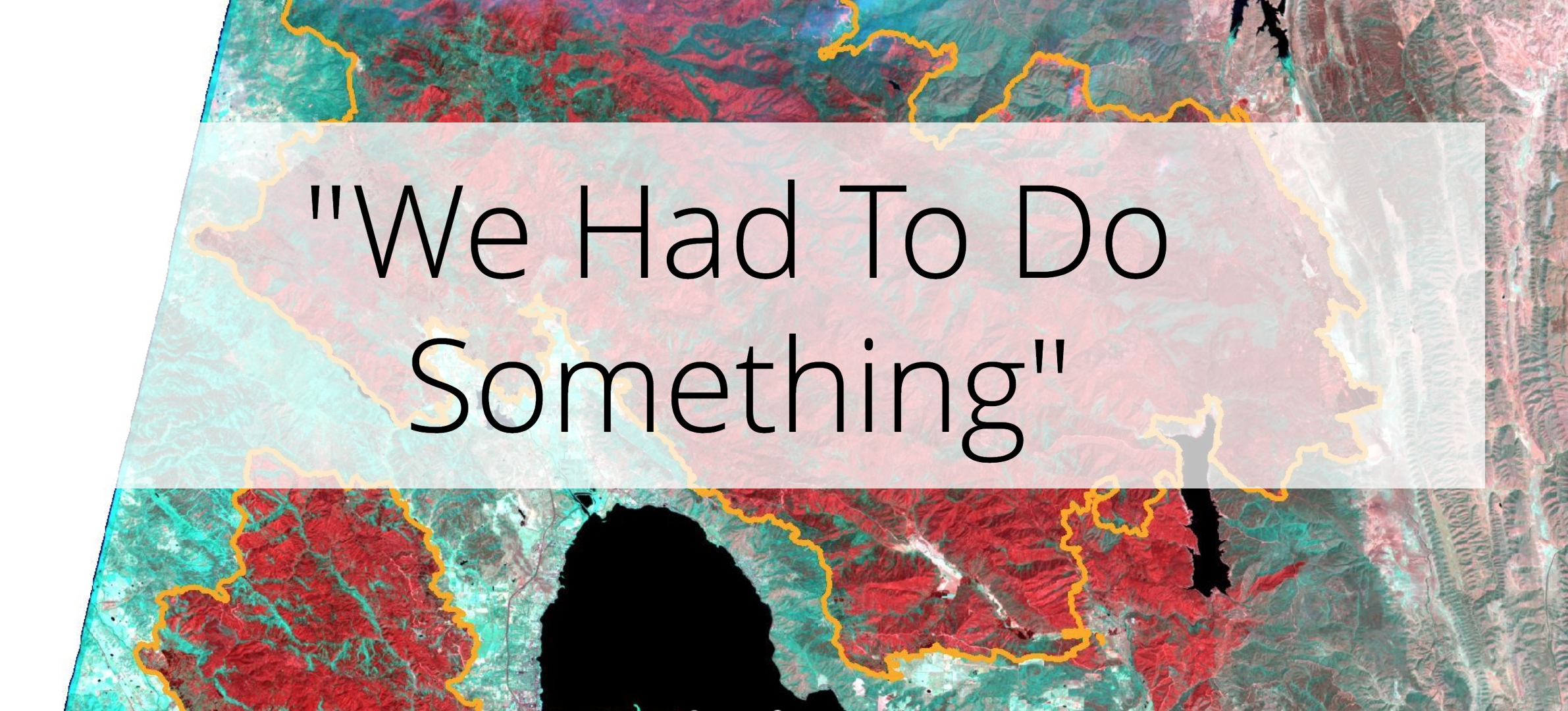
Big Iron & Big Profit
As is in vogue today, business experts are allowed to pose as experts in any and all things. I caught this review of the new book, Running Out of Time: Wildfires and Our Imperiled Forests in Wildfire Today.

Caldor Fire Story Maps by Courtney Kaltenbach and Maxwell Spiegel
“I’ve never seen a retardant drop successfully contain fire spread and I often see areas of burned forests coated in powdery pink retardant that I know is going to seep into the soil and poison the areas watershed. Aggressive fire-suppression tactics are becoming more futile and more dangerous in the face of climate change. The impacts of the Caldor Fire on Lake Tahoe is an illuminating example of the harm of fire suppression.”
Check out the story map below to learn about the suppressive firefighting tactics used during the 2021 Caldor Fire and their impacts on Lake Tahoe and the surrounding area.

10 Ways that the Climate Crisis, Wildfires and Militarism are Intertwined
The war on wildland fire is simply an extension of our country’s extreme militarism – a place where veterans of foreign wars, wanna-be cops, and other conservative-minded men, mostly, can assemble, bond, and wrap themselves in a narrative of strength, heroism and sacrifice. There is a place for men and women to suppress fires near homes and vulnerable infrastructure. However, claiming glorious victory when fires are easiest to suppress, go out on their own, or when a break in the weather moderates conditions is disingenuous.

We Had to Do Something: Futility and Fatality in Fighting the 2018 Mendocino Complex Fire
Fire managers felt pressure to “do something” to stop the spread of the Ranch Fire, attempting a hastily planned burnout along a bulldozer fireline. But this action contradicted the advice from Forest Service risk management experts who warned that aggressive firefighting tactics had low probabilities of success given record-level fuel dryness at the time.

Carr Fire CATlines: The Environmental Impacts of Bulldozers in Wildfire Suppression
Bulldozer firelines or "CATlines" cause extensive, lasting environmental damage and destroy Native American heritage sites. In the era of climate change, they are rapidly becoming ineffective in stopping wildfire spread during severe weather conditions. The 2018 Carr Fire offers a case study for the kinds of damage caused by catlines whose scars still remain on the landscape.

THE SKY’S THE LIMIT: THE SOBERANES FIRE SUPPRESSION SIEGE OF 2016
The Soberanes Fire Suppression Siege offers an extreme example of excessive, unaccountable, budget-busting suppression spending that is causing a fiscal crisis in the U.S. Forest Service. It demonstrates the absolute necessity for Congress to perform critical oversight of wildfire suppression spending by federal agencies.

Cat Scratch Fever
The Mendocino Complex has taken its place in the record books–but probably not for long–as the largest wildfire in California state history. While the River Fire is 100% contained at this time, it is possible that the Ranch Fire may eventually burn over a majority of entire Mendocino National Forest before it stops its advance.
One thing that leaps out with a casual glance at the current fire map is the extensive use of dozers in primary and contingency firelines. Several of these dozerlines a.k.a. “catlines” come right up to and possibly encroach into the Snow Mountain Wilderness. In fact, the California Regional Forester gave permission for dozers to enter the wilderness with the blessing of the Mendocino Forest Supervisor.

Other Than Full Suppression
This essay was written in response to a recent post at Wildfire Today: Wildfire News and Opinion, titled, “Are we experiencing a “new normal” of wildland fire behavior?”

Ferguson Fire: Yosemite's Proving Ground for Ecological Fire Use
The Ferguson Fire has been burning for nearly two weeks and has captured most of the attention of the national news media. Tragically, one firefighter was killed on the second day of the fire when the bulldozer he was operating rolled down a steep slope. Miraculously, no homes have been lost as of July 25th. The Ferguson is going to burn a large area over a long time.

History never repeats itself but it rhymes: Rim Fire redux
The year was 1961. President Robert F. Kennedy was President of the United States. The Central Valley Project had been built and the growing San Joaquin Valley agribusiness gave way to traditional ranchland in the oak savanna of the Sierra foothills southwest of Yosemite National Park. The Harlow Fire started on July 10th. The following day it exploded, burning over 20,000 acres in two hours, vaporizing the communities of Ahwahnee and Nipinnawasee, and killing an elderly couple. Supposedly, that run on the Harlow Fire was one of the fastest ever recorded. The communities would never recover.

Collateral Damage: The Environmental Effects of Firefighting
The 500,000 acre Biscuit Fire was the Nation’s largest wildfire in 2002, and was the world’s most expensive wildfire suppression incident in history at that time. Although the wild area was over 85% wilderness and roadless area with tens of thousands of acres of climax old-growth forest, aggressive firefighting actions severely damaged the landscape, and the Biscuit Fire area became the largest USFS timber sale proposal in modern history when the agency planned to “salvage” log trees in areas severely burned by high-intensity backburning.
